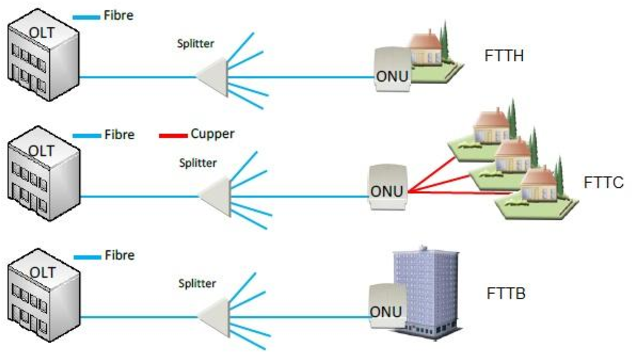Fiber To The Home "FTTH" Technology

The growing demand for broadband connectivity is driving the adoption of FTTx solutions that leverage fiber optic networks to deliver high-capacity communications to homes (FTTH), businesses (FTTB), communities (FTTC) and other premises over long distances and at manageable costs. Over the years, Lenora Innovation has been providing comprehensive fiber optic network solutions to Telecom operators, communications integrators, as well as to government and military organizations for diverse needs and applications. Our line of superior products allows them to enjoy reliable networks, reduce installation time and drastically cut down the maintenance and electricity costs. Lenora provides a range of cutting-edge FTTx elements that integrate advanced technology, thorough expertise, and exceptional service. Our expert team studies the requirements of each customer and designs a customized combination that will provide a scalable solution for both current and future needs. We provide an end-to-end GPON (Giga-Passive-Optical-Network) solution, including cabling, closures, ODF and other fiber optic connectivity products aiming to achieve maximum capacity within a minimal space as well as a range of implementation and testing equipment for faster, effective installations. As a leading fiber optic components manufacturer, Lenora offers unparalleled products of cost-effective FTTx solutions for all of our customers. we also will help you to establish the fastest and reliable network to each of your subscribers.

Range of Lenora solutions, it’s easier than ever to build a business case and to plan, cost and deploy a next-generation network quickly. Lenora makes projects simple, transparent and manageable – and deliverable at the lowest possible cost. Straight forward and transparent, Lenora adds value for network operators in many different ways. One emerging technology in this sector has been Fiber-to-the-Home (FTTH), also called Fiber-to-the-Premises (FTTP) or Fiber-to-the-Building (FTTB). FTTH brings fiber optics directly to homes/buildings, while a similar technology, fiber-to-the-node (FTTN), brings the fiber optics to a community and then connects the fiber optics to the homes with a traditional copper cable. In the past, consumer telecom networks had a high-speed backbone with lower speed cables running to user’s homes and offices. The high-speed backbones were able to carry the combined capacity of all the users, but the infrastructure running to the users severely limited the speed and bandwidth available to consumers. FTTH allows for much larger bandwidth and much faster delivery speeds, which are essential for modern "triple-play" deliveries in which access providers offer video, data, and telephony services. It also requires the installation of new transmission, wiring, and receiving infrastructure.

ODN named optical distribution network that composed of 5 parts, Feeder Optical Cable, Distribution Point, Distribution Optical Cable, Access Point and Drop cable. And the splitter often is located at the distribution point. Therefore, Drop Cable is the most difficult part in the 5 parts of ODN deployment, usually be separated as “Home pass” and “Home entry”. In the whole ODN network, people can control the ODN system by FMS (Fiber Management System). It gives maintenance to the whole ODN network from the starts till the end, and trouble forewarning and trouble location can be realized by the application of the system.
WHO NEED FTTX, Home builders need FTTX to add value to their homes such as profit, because they provide a reason to provide structured cabling inside the home. Hardware providers who want to sell equipment to build the networks and install in the homes as well as structured cabling companies who participate in the market. Service providers need it because IPDV, HDTV, video on demand, etc. Those who want to offer video services. Home owners used it for high-speed internet access and video downloads.

Benefits of using FTTH, The main benefit of FTTH is increased network performance, specifically higher speeds over a long distance, which the older method of using coaxial cables, twisted pair conductors and DSL cannot reach. Some benefits that come with this include:
- Improved performance for high-definition video streaming on applications like YouTube and Roku.
- Allows for multiple upgrades without having to replace the fiber, leading some to call FTTH “future proof.” The infrastructure surrounding the fiber can be updated without having to update the fiber itself.
- Higher speeds over longer distances than previous technologies.
- Better than other fiber configurations because fiber connects directly to residences and can complete remaining network segments with Ethernet or coaxial cable.